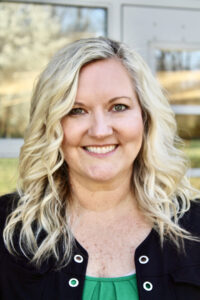
Jill Handley
As a principal who grounds her work in leading a school that is a model of inclusivity, I know that optimal student success in achievement, engagement and sense of belonging occurs when there is a strong partnership between home and school. Whenever I talk with families, I tell them our partnership is like a triangle with the student at the top, the school on one side, and the family on the other. If any one of those sides or vertices are broken, optimal student success cannot occur.
Four years ago, I attended a professional development session at the Elementary and Secondary Education Act Conference with Steve Constantino where he shared ideas from his book, “Engage Every Family.”. In the book, Constantino outlines five principles of family engagement that schools should consider. Those five principles are closely aligned to Joyce Epstein’s “Framework of Six Types of Parent Involvement” and with the Commissioner’s Parent Advisory Council’s (CPAC’s) overarching objectives outlined in “The Missing Piece of the Proficiency Puzzle” that was released by the Prichard Committee in 2007.
Hungry for more ideas to better engage our families, I devoured the book and immediately ordered a copy for each member of our Family and Community Engagement (FCE) Committee. We engaged in a book study and began developing our own understanding of the difference between family involvement and family engagement. Next, we started to reflect upon our family engagement practices by asking the question, “Would every family choose us?” Using this question as a guide, we implemented several of the strategies listed in the book which led to an increase in family engagement and student achievement.
Like many schools, we pride ourselves on the relationships we establish with our families and community partners. We always work hard to initiate positive outreach to develop trust and mutual respect with our families and have used a variety of methods to engage in two-way communication. In 2019, when we were recognized as a State and National School of Character, part of the process involved family interviews. Listening to the way families responded with pride about their relationship with our school was such a bucket filler and affirmed we were on the right track to engaging our families.
As a Title 1 School with over 84% of our students qualifying for free or reduced lunch and 46% of our students speaking English as a second language, creating equitable opportunities for learning has always been a priority for Kenwood Elementary. To help achieve this goal it often means helping remove non-academic barriers for our students and families. We are fortunate to have a Family Resource Center (FRC) coordinator who helps support this work, but the truth is schools have significant student and family needs that extend beyond the capacity of one family/community based position. As a result, we chose to allocate funding to create a certified family ambassador position which took effect just before the pandemic began. During non-traditional instruction (NTI) the need to help remove non-academic barriers and provide equitable opportunities increased tremendously and thankfully our family ambassador, Aimee McDonnell worked closely with our FRC coordinator to lead our FCE team in supporting families.
While connecting with and supporting families during NTI allowed us to deepen our relationships, it also highlighted a need to take an even more comprehensive approach to supporting families. Understanding the needs schools have, our district family engagement specialist, Chrystal Hawkins, partnered with the National Center for Families Learning (NCFL) to provide differentiated family engagement support for schools. We signed up for individualized support and were partnered with Cindy Baumert from NCFL who helped take our family engagement to a whole new level. As a result of our work with Cindy, we developed a family engagement committee with parents who met monthly to give feedback and insight. Our work with Chrystal and Cindy helped us transition from doing school to families to doing school with families by engaging their voice on the front end of planning.
It was during our work with Cindy that we found out about the Family Friendly Certification. Proud of the work we had been engaging in, we were excited to apply. As the recipient of several other recognitions, we knew that applying would undoubtedly require us to provide evidence of our accomplishments. Because of the success we had achieved with our families we initially thought, “Of course we are a family-friendly school, and we have lots of evidence to prove that.” What we didn’t anticipate was the critical lens we would have to examine our practices through.
We began by conducting the Kentucky Family and School Partnership Self-Assessment and realized that we did have a lot of surface level evidence of our family engagement success; however, the self-assessment caused us to take a deeper dive into our practices to refine and add to what we were already doing. Our FCE Committee developed action plans for each of the five components of the self-assessment that focused on creating sustainable systems and structures to support each of the five areas of family engagement. The plans outlined what we were already doing and what we needed to do and included objectives, strategies/actions steps, timelines, responsible parties, resources/funding, measurements of success, and equity considerations.
Many of the strategies and resources we included in our action plans came from the training we engaged in as a result of the application process, along with the resources in the “Kentucky Family and School Partnership Guide and the Kentucky Family Engagement Digital Playbook.” Having detailed plans allowed us to have a laser-like focus on immediate actions steps we could take. Some examples of the ways in which we improved our practices as a result of the process are:
- Creating a designated “community center” within the school for families to connect with school staff and other families;
- Eliminating all “reserved for staff” parking and instead reserving it for visitors to create a more welcoming environment for families and community members;
- Increased family voice through surveys and conversations to inform school needs; and
- Development of Multi-Tiered System of Supports (MTSS) for Families that connects each family with at least one caring adult from the school (besides their child’s teacher) that acts as a liaison and advocate for the family.
Karen L. Mapp reinforces the need for schools to prioritize family engagement from being seen as an add-on for student success to being integrated as a core pillar of teaching and learning. Engaging in the process of applying for and becoming the first school in the state to certify as a Family Friendly School not only helped solidify that integrated pillar for us, but also provided resources and support to make it happen.
We are so honored to have earned this distinction and are grateful to our families and community partners who helped make it happen. We also understand that becoming Family Friendly Certified is only the beginning. Now that we have created a systematic approach to truly engaging all families, we must make sure we examine all decisions for teaching and learning through a family engagement lens. If schools and districts are going to truly engage families as co-producers in their child’s education, then family engagement systems and structures must be re-examined and funding for positions and resources must become a priority.
Jill Handley is the principal of Kenwood Elementary School (Jefferson County Public Schools).



Leave A Comment